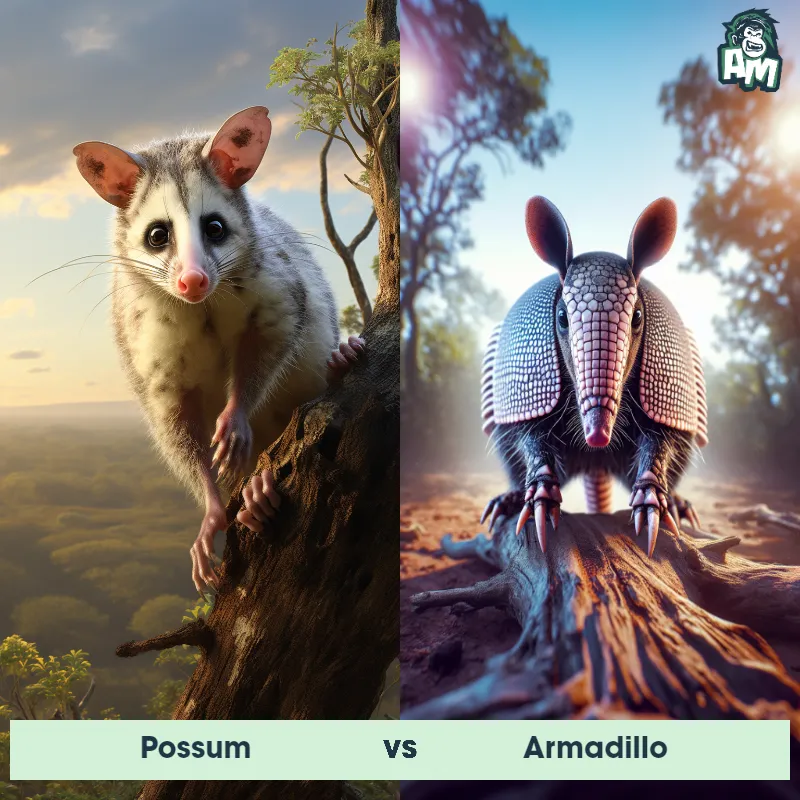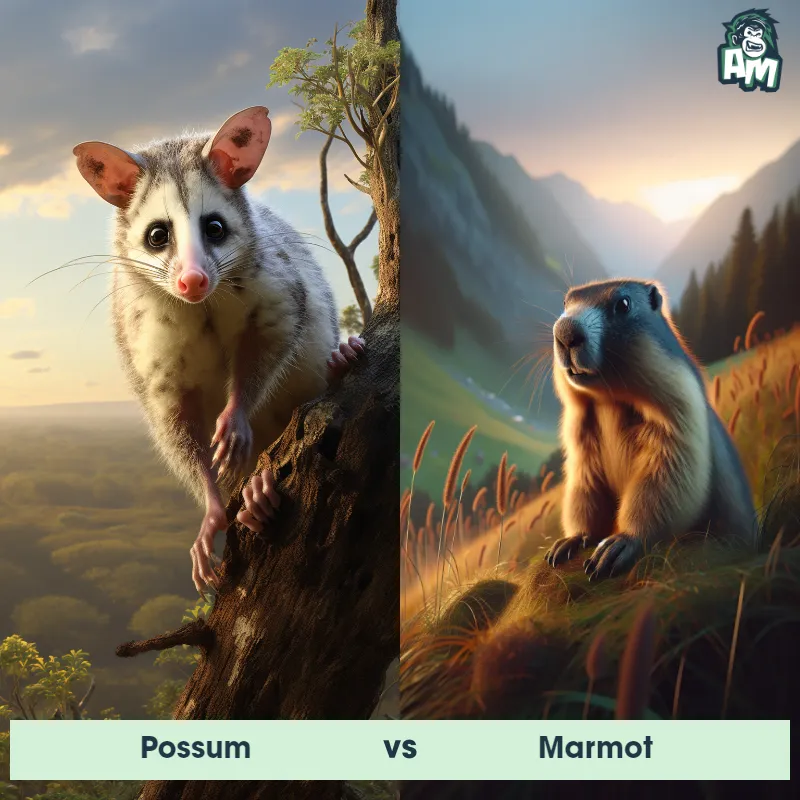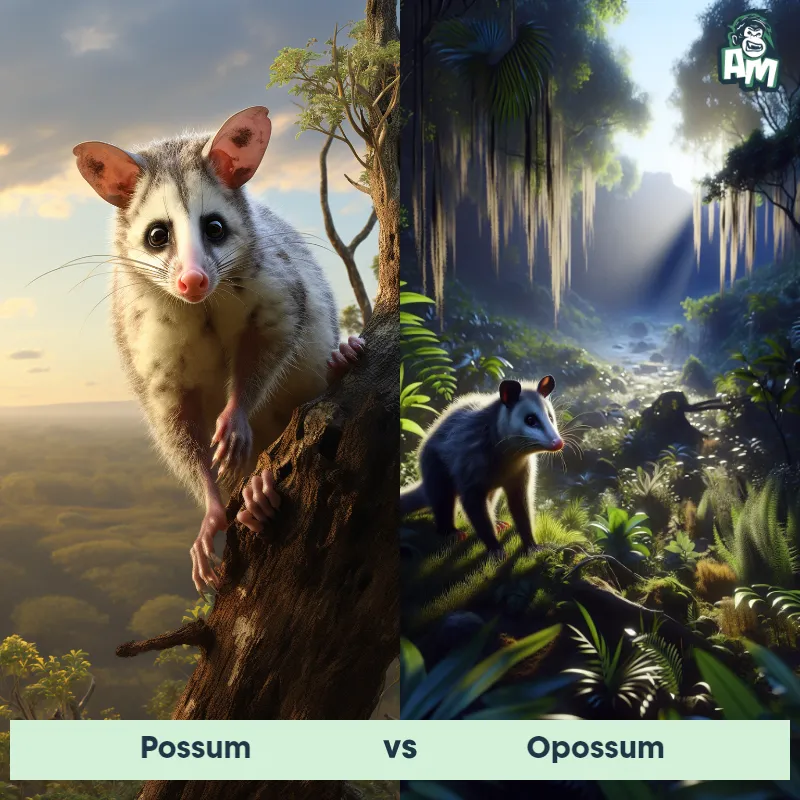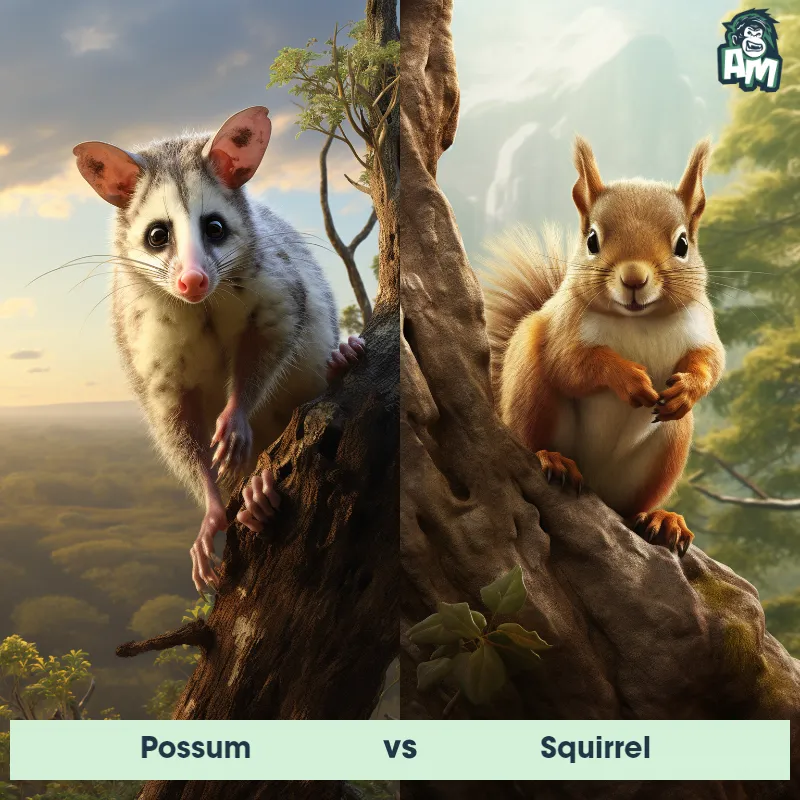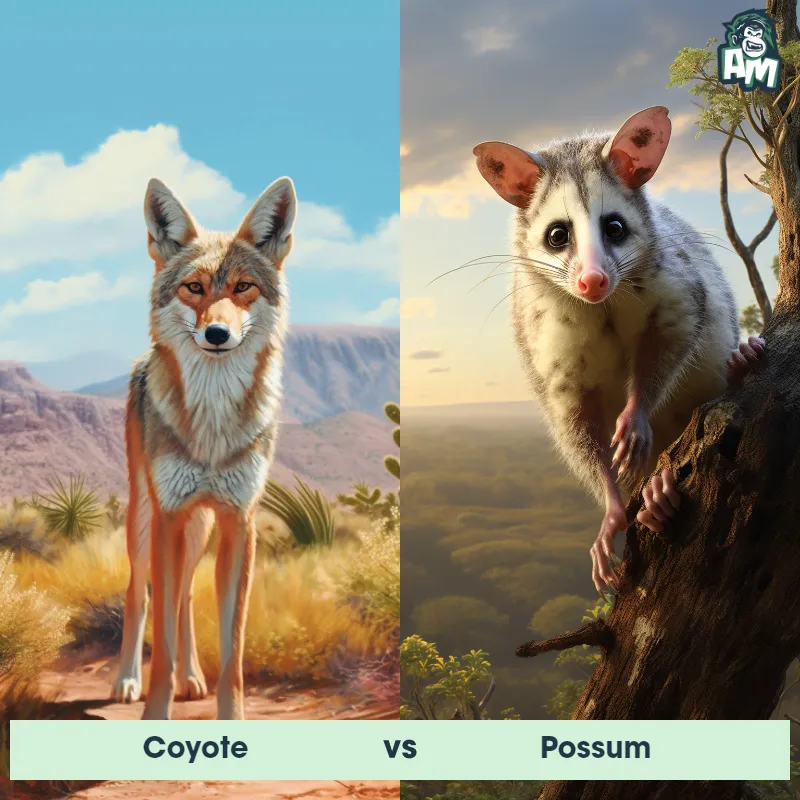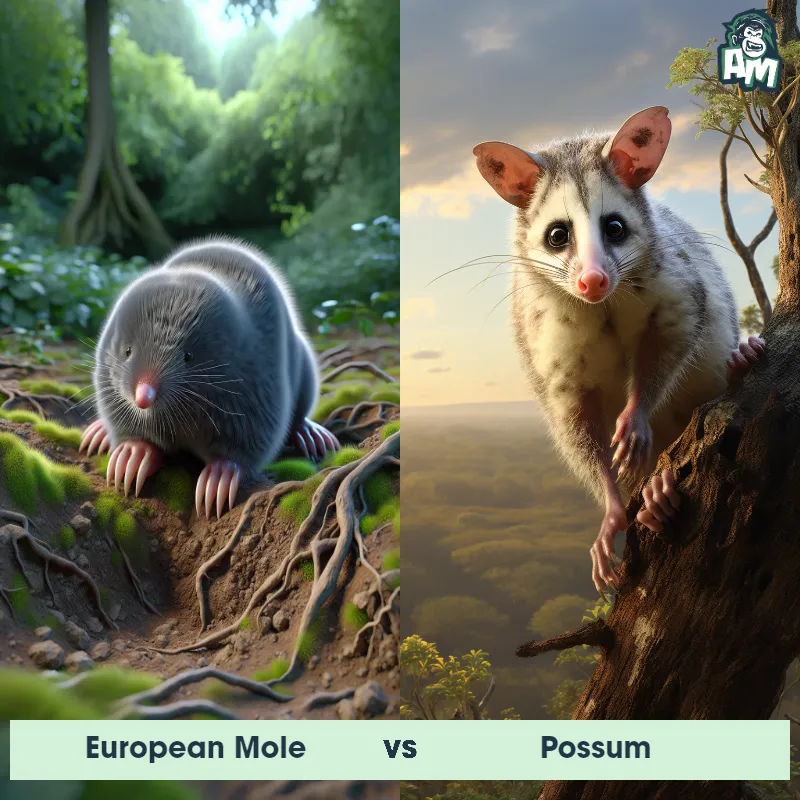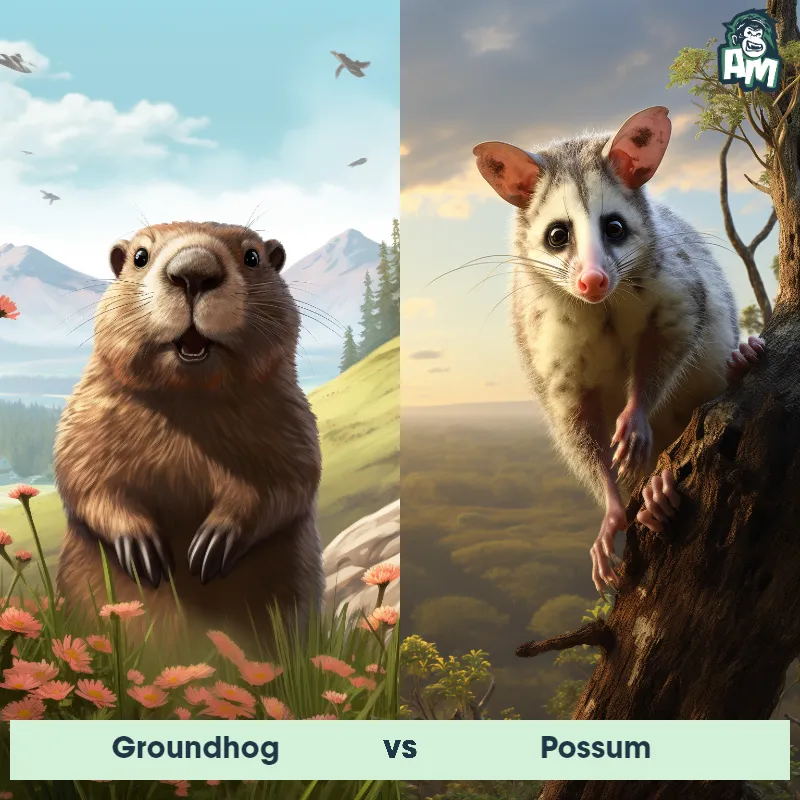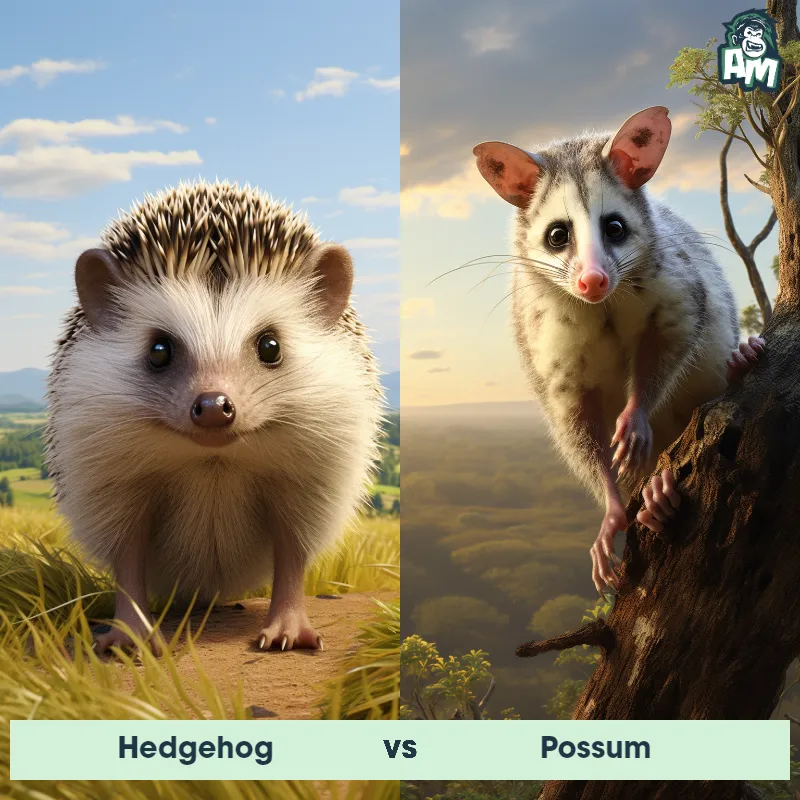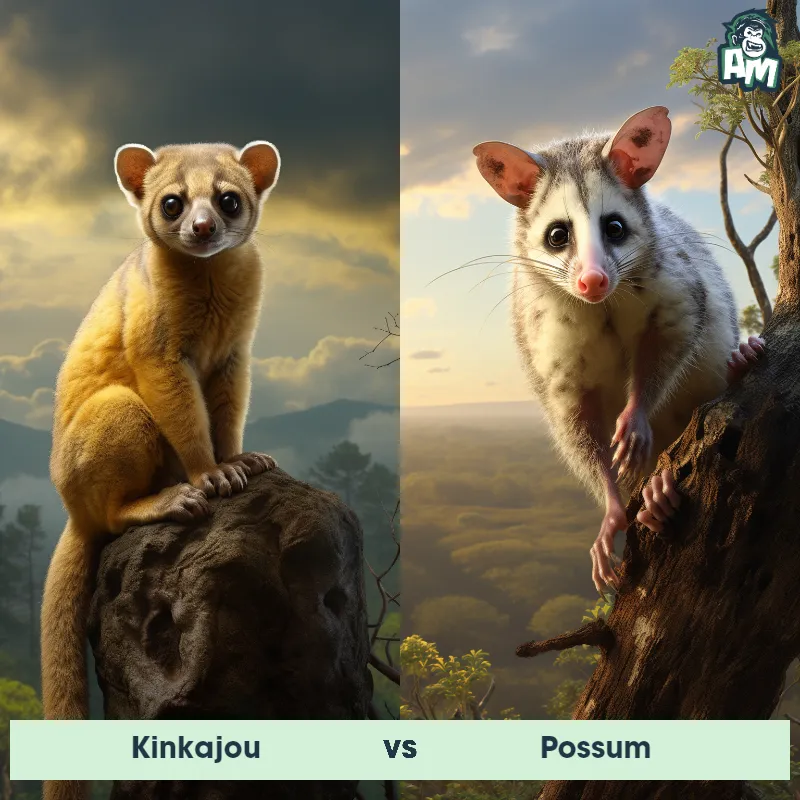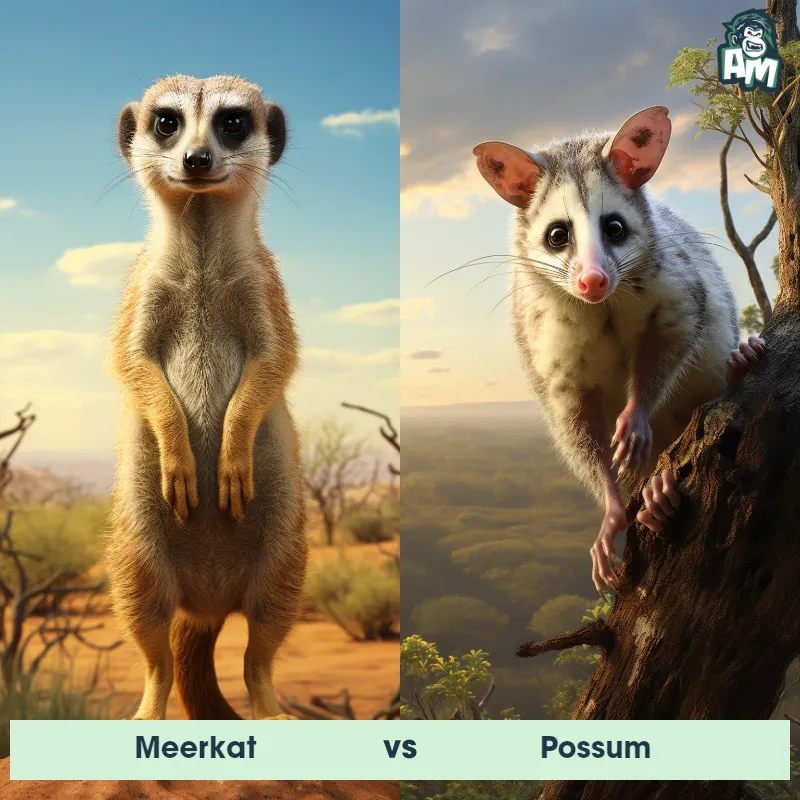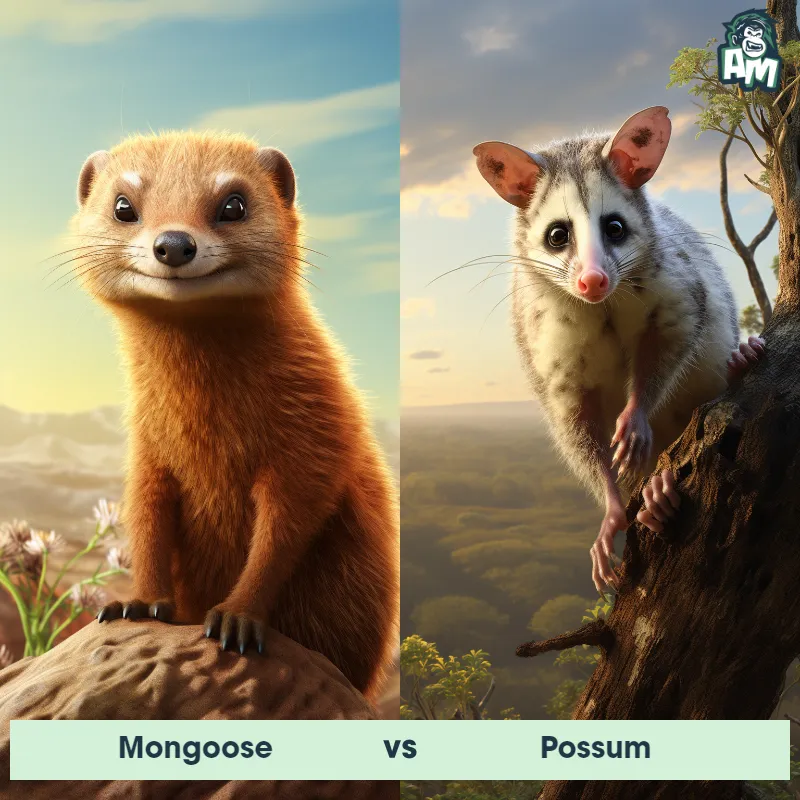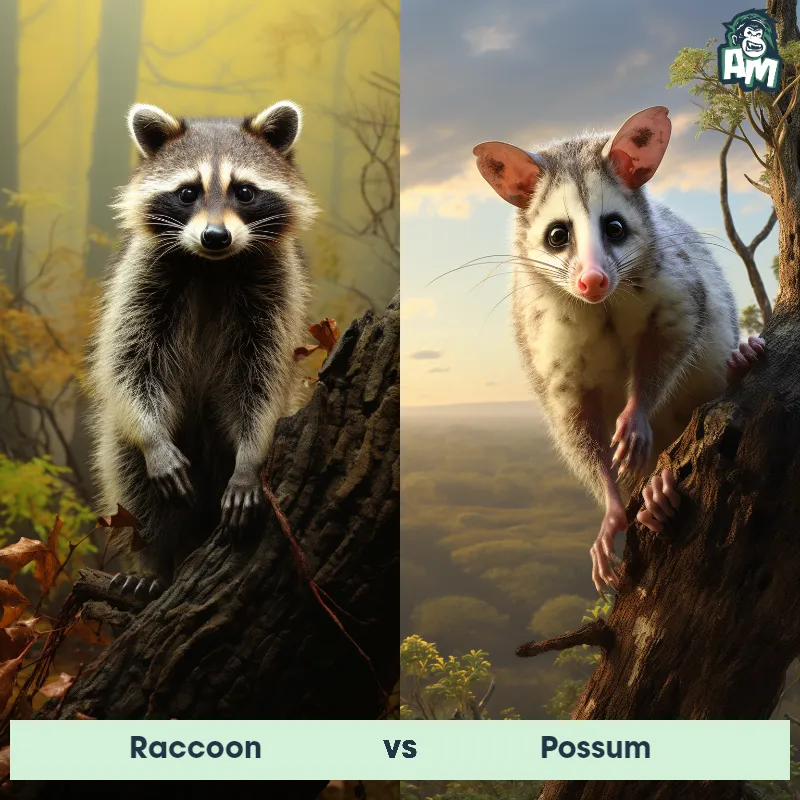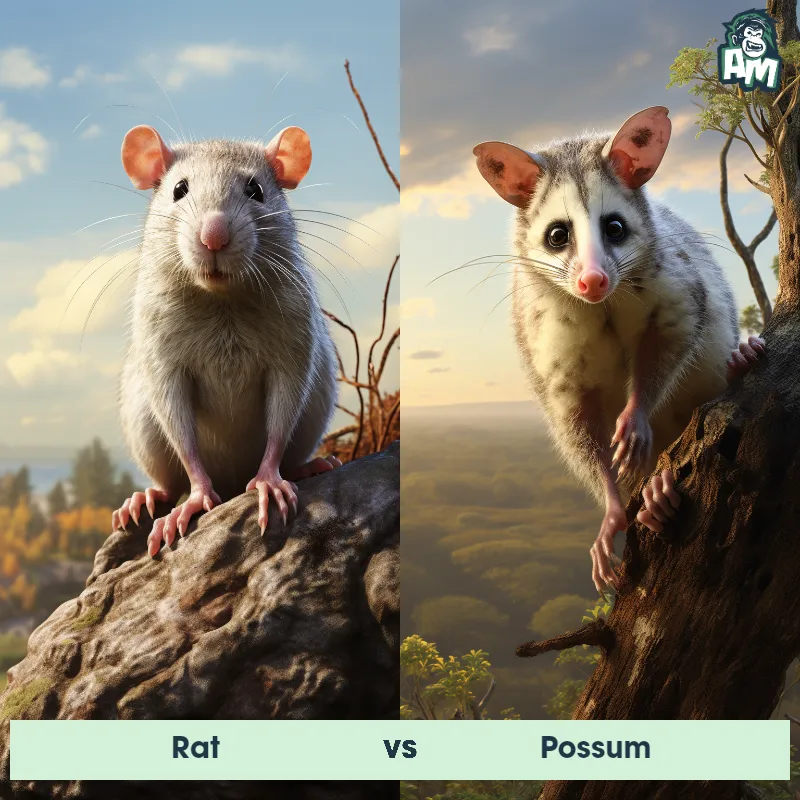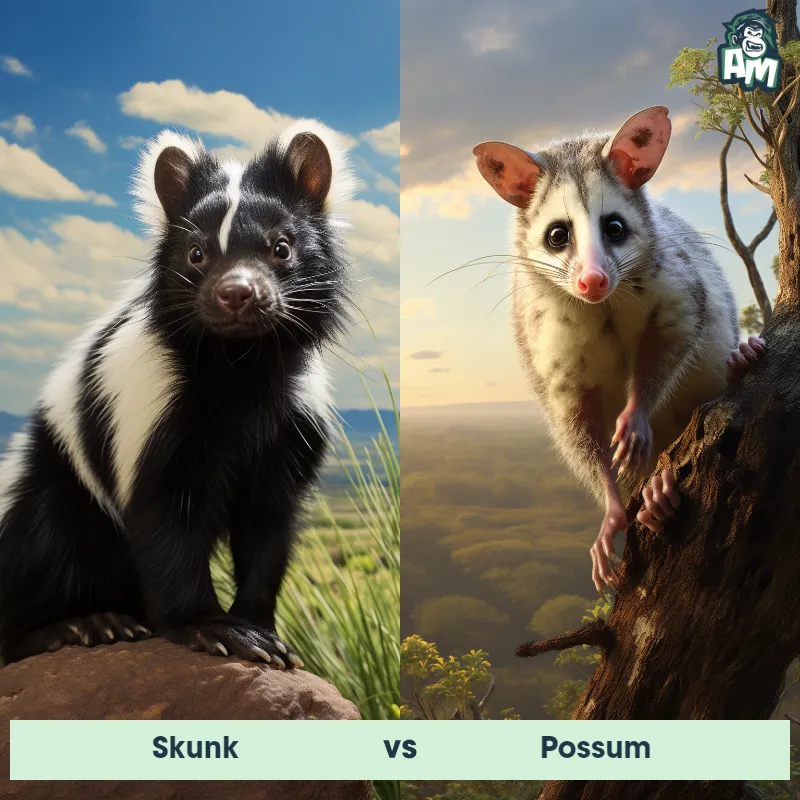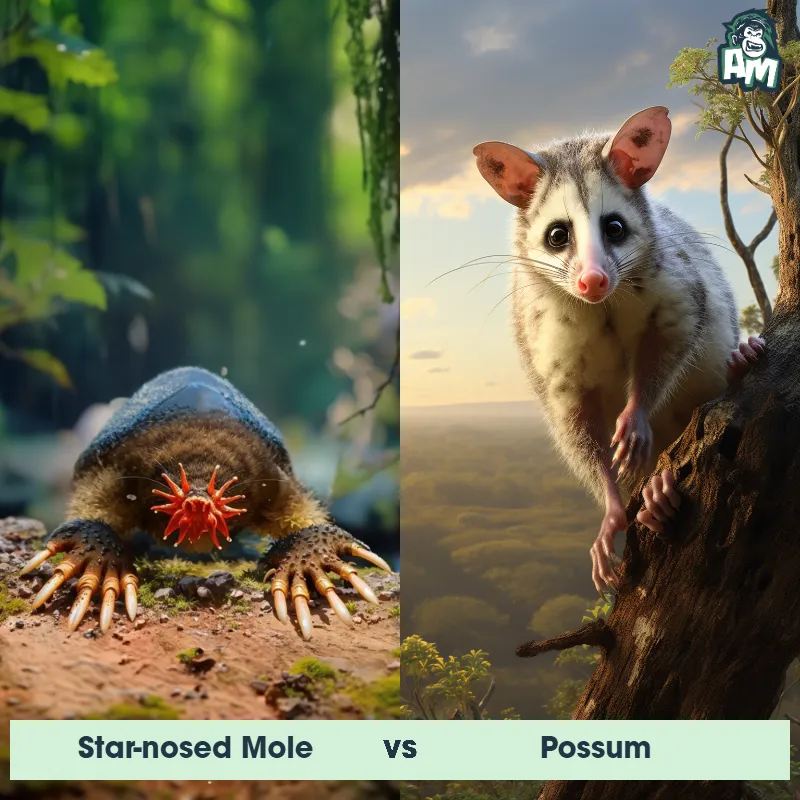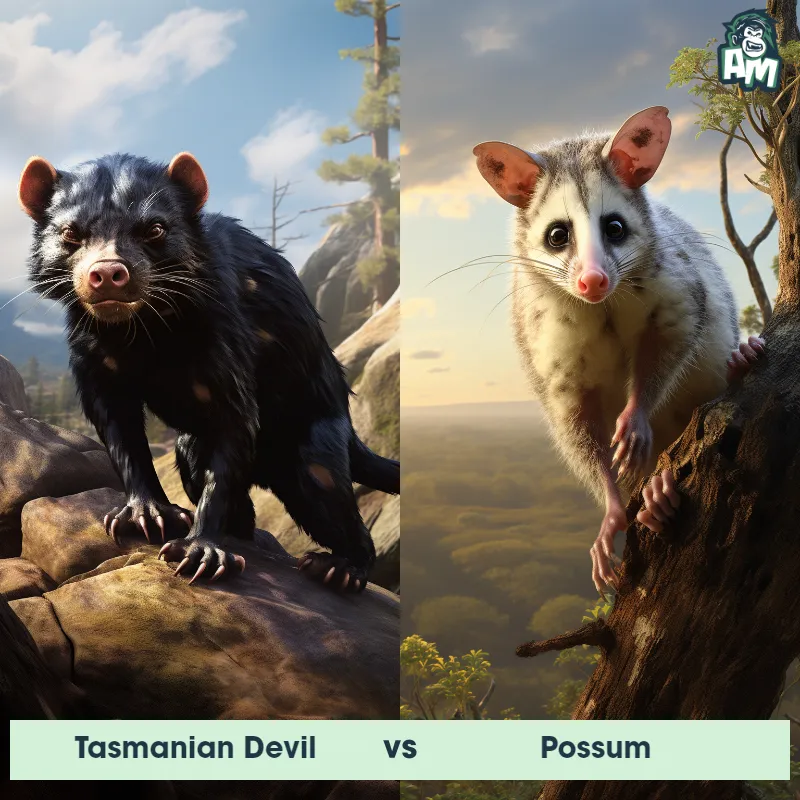The Possum
The Possum, also known as the Virginia opossum, is a marsupial native to North America. It has a distinctive appearance with a long, hairless tail, a pointed snout, and round, hairless ears. Its fur is predominantly gray or brown, with lighter patches on the face and belly. Possums have a pouch where they carry and nurse their young, similar to kangaroos. They are generally nocturnal and have adapted well to urban areas, often making their homes in attics, crawl spaces, or hollow trees.
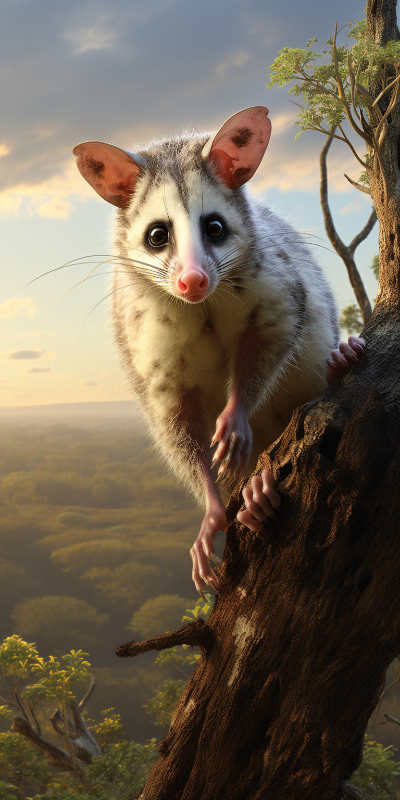
| Possum | |
|---|---|
| Size | 15-20 inches (38-51 cm) not including tail |
| Weight | 1.5-14 lbs (0.68-6.35 kg) |
| Speed | 4.4mph (7km/h) |
| Key Strength | Ability to feign death as a defense mechanism |
| Biggest Weakness | Lack of aggressive behavior |
| Scientific Name | Didelphis virginiana |
| Family | Didelphidae |
| Habitat | Forests, farmlands, and suburban or urban areas |
| Geography | North America |
| Diet | Omnivorous, eating insects, small animals, and various plants, including fruits and vegetables |
| Lifespan | 2 years - 4 years |

The Possum
The Possum, also known as the Virginia opossum, is a marsupial native to North America. It has a distinctive appearance with a long, hairless tail, a pointed snout, and round, hairless ears. Its fur is predominantly gray or brown, with lighter patches on the face and belly. Possums have a pouch where they carry and nurse their young, similar to kangaroos. They are generally nocturnal and have adapted well to urban areas, often making their homes in attics, crawl spaces, or hollow trees.
Fun Fact: One fascinating fact about the Possum is that they employ a unique defense mechanism called "playing possum." When confronted with a threat, they may involuntarily enter a state of temporary paralysis, with their body going limp, and their breathing and heart rate dropping drastically, giving the appearance of being dead. This trick often confuses predators and provides the Possum with a chance to escape.
| Possum | |
|---|---|
| Size | 15-20 inches (38-51 cm) not including tail |
| Weight | 1.5-14 lbs (0.68-6.35 kg) |
| Speed | 4.4mph (7km/h) |
| Key Strength | Ability to feign death as a defense mechanism |
| Biggest Weakness | Lack of aggressive behavior |
| Scientific Name | Didelphis virginiana |
| Family | Didelphidae |
| Habitat | Forests, farmlands, and suburban or urban areas |
| Geography | North America |
| Diet | Omnivorous, eating insects, small animals, and various plants, including fruits and vegetables |
| Lifespan | 2 years - 4 years |
Possum Matchups
We use AI to simulate matchups between the Possum and other animals. Our simulation considers size, strength, and natural predatory behaviors to determine the most likely outcome.

Can't find the Matchup you want?
Create Your Own MatchupPossum: Diet, Predators, Aggression, and Defensive Behaviors
What do Possums eat?
Possums are omnivores, meaning they eat a wide variety of foods. Their diet typically consists of fruits, insects, small animals, eggs, and even garbage or carrion. They are known to be opportunistic feeders and will consume whatever is available to them in their environment.
Do Possums have any predators?
Possums have several natural predators, including owls, foxes, coyotes, dogs, and even domestic cats. However, their main defense mechanism against predators is their ability to play dead when threatened, also known as "playing possum". This behavior often confuses predators and allows the Possum to escape unharmed.
Are Possums aggressive?
Possums are not inherently aggressive animals and will typically avoid confrontation if possible. They are known to be solitary and shy creatures that prefer to retreat rather than engage in aggression. However, they may hiss, growl, or show their teeth if they feel threatened.
Do Possums fight?
Possums are not known for engaging in fights with other animals, as their primary defense mechanism is to avoid conflict altogether. They are more likely to use their agility and ability to climb trees to escape from potential threats rather than engage in physical combat.
How do Possums defend themselves?
Possums have several defense mechanisms to protect themselves from predators. In addition to playing dead, they can also emit a foul-smelling odor from their anal glands as a deterrent. They may also make loud, aggressive noises to scare off potential threats or use their sharp teeth and claws to defend themselves if necessary.
What is the biggest weakness of Possums in a fight?
Despite their ability to defend themselves using various mechanisms, Possums are relatively small and not particularly strong animals. Their size and lack of physical strength are their biggest weaknesses in a fight, as they may struggle to overpower larger predators or aggressive animals if a confrontation occurs.
Fun Fact: The Possum has an incredible diet variety, as it is an opportunistic omnivore. They will eat almost anything they come across, including fruits, insects, birds' eggs, small mammals, and even carrion. This adaptability in their diet helps them thrive in various environments and ensures their survival in both urban and rural areas.
Fun Fact: One interesting aspect of the Possum is its unique reproductive process. Females have a bifurcated reproductive tract, with two uteri. Not only can they produce large litters of up to 20 babies, but they can also carry and nurse them in their pouches until they are old enough to venture out on their own. This reproductive strategy helps ensure the survival of their offspring in potentially dangerous environments.



